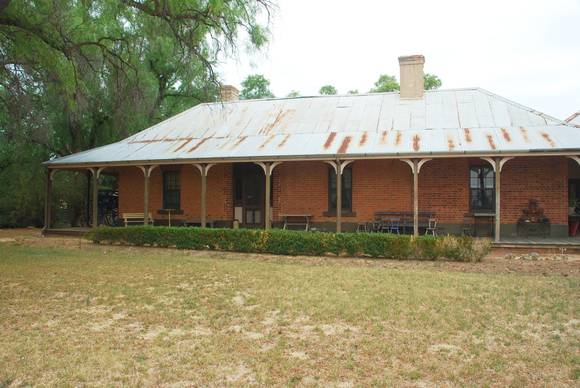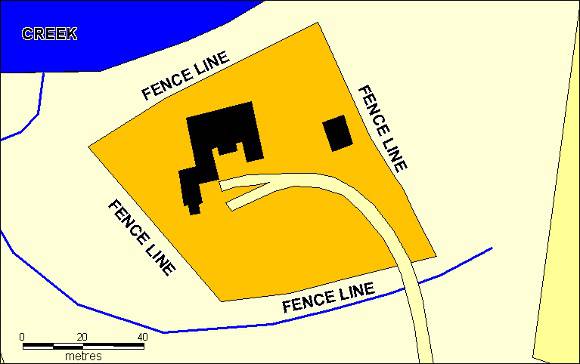| Back to search results » | Back to search page » |
|
PLAISTOW HOMESTEAD AND STORE
Location324 RODBOROUGH ROAD JOYCES CREEK, MOUNT ALEXANDER SHIRE
File Number603206LevelRegistered |
|
Statement of Significance
What is significant? Plaistow Pastoral Run was taken up the Joyce brothers George and Alfred in 1844. The Joyces, who were from England, emigrated to the Port Phillip district with little knowledge of sheep farming. George, who had arrived in 1840 with £500 from his father to establish himself and later his brother as pastoralists, was initially a tailor but later became a partner in a sheep station at Mount Macedon. Alfred had been apprenticed as a mechanical engineer in London, and migrated in late 1843. The 10,000 acres (15 square miles) that comprised the Plaistow run were acquired from Charles McKinnon in 1844 for £50. The purchase price included the run, and improvements being two very primitive huts, a log sheep-yard, fifty hurdles and a watch-box. None of these structures survive. The surviving early two-room section of the homestead with cellar was possibly built as an extension to the original 1840s slab hut. It may date from c1846. In 1850 the Joyces decided to commence the building of a proper brick house of four or five rooms, to be made from bricks produced on site. The commencement of the Mount Alexander gold rush momentarily postponed completion of the house whilst the brick makers tried their luck at the diggings. Further additions in the nineteenth century extended the house to its present size. The house is single storey with a hip roof and verandah overlooking Joyces Creek. A nearby water supply was an essential prerequisite to station life for washing sheep as well as drinking, cooking and washing. The structure known as the store, or overseers building, is a double height building constructed of bricks on a foundation of bluestone rubble. It is supposed to have been erected in c1846. The roof is clad with shingles, visible internally below a later covering of corrugated iron sheeting. The larger part of the building is a storage area with loft space. Steps lead down to an underground cellar. The cellar is located beneath the second, much smaller space with a fireplace and chimney, believed to have been quarters for an overseer. Internally much of the house is decorated in the style the late Edwardian period, including an unusual Chinoiserie style wallpaper with a crane theme. George and Alfred Joyce applied for the pre-emptive right to 640 acres of freehold land at Plaistow in September 1852, and the application was approved in April 1853. Shortly before this Alfred Joyce married the daughter of a neighbouring squatter, and the brothers divided the Plaistow run into two parts, Alfred’s run being known as Norwood. The Joyces did not suffer as a result of the early gold rushes, but rather were able to prosper by supplying stores, vegetables, meat and wheat and hay to the diggers. Their paddocks provided pasture for horses whilst owners tried their luck at nearby Mt Alexander. The process of alienation and subdivision of the run was begun in the 1850s and by the end of the nineteenth century much of it was sold off to become productive agricultural land. None of the outbuildings from Plaistow survive. How is it significant? Plaistow is of architectural and historical significance to the State of Victoria. Why is it significant? Plaistow is architecturally significant an early example of a pastoral homestead building. Stylistically it is representative of the colonial period in Victoria, particularly for the unadorned brickwork and the verandah with simple timber quadrant brackets to the posts. The store is an early surviving structure. The manufacture of bricks on a property was standard practice before the railways provided an efficient means of distributing the mass-produced product to rural areas. Plaistow is historically significant as evidence of the importance of pastoralism in central Victoria before the gold rush. It is significant for its associations with the Joyce brothers and their family. The Joyces were representative of educated middle class men from Britain who came to the Port Phillip district, with capital but little or no experience of sheep or cattle farming, to try and establish their fortune in pastoralism. Alfred Joyce’s letters and his later reminiscences written in the 1890s were first published in 1942 as ‘A Homestead History’.
Group
Farming and Grazing
Category
Agriculture







